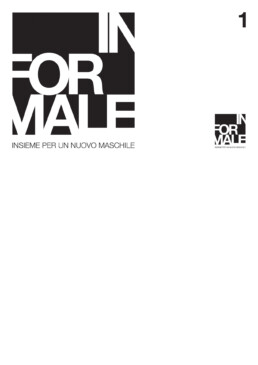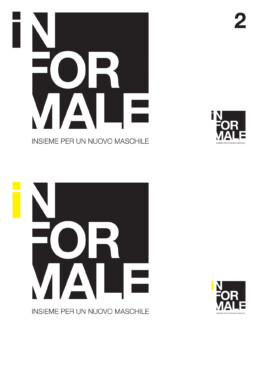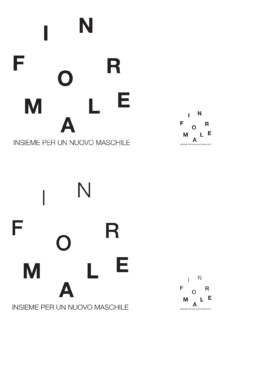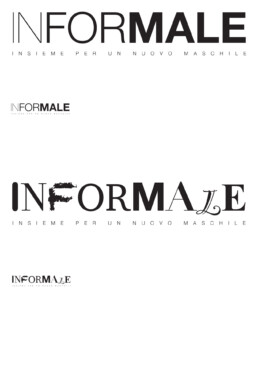Informale
INFORMALE
Agg. [comp. di in e formale, sull’esempio del fr. informel nel sign. 1 e dell’ing. informal nel sign. 2 Nella storia dell’arte del sec. 20°, termine con cui (in contrapp. a figurativo) è qualificata una corrente artistica (arte i.) – di particolare rilievo in campo pittorico (pittura i.) ma con interessanti manifestazioni anche nel campo della scultura (scultura i.) – che esclude la rappresentazione di una forma definita e oggettiva; sviluppatasi dopo la seconda guerra mondiale, esalta nell’opera, in opposizione al costruttivismo geometrico astrattista, l’importanza della materia e del gesto, considerando l’opera d’arte come un blocco di realtà a sé, diversa (altra) da quella dell’esperienza quotidiana e soprattutto sganciata da ogni esperienza artistica anteriore. Analogam., con riferimento alle opere e agli artisti: un dipinto
i.; in bassorilievo i.; un pittore i. (o, come sost., un informale, gli informali). 2. Non ufficiale; detto soprattutto (per diretta influenza dell’analogo uso inglese), nel linguaggio diplomatico e giornalistico, di conversazioni o colloquî a carattere privato, e perciò non impegnativi e compromettenti, che si tengono in ambienti o durante incontri ufficiali, a titolo di orientamento senza verbalizzazione. In senso generico, una riunione i., un incontro, un colloquio i., a carattere non ufficiale, privi di formalità burocratiche; per estens., semplice, amichevole, alla buona, riferito a rapporti tra persone (mi ha ricevuto, ha conversato con me in modo del tutto i.), o comune, di tutti i giorni, riferito all’abbigliamento (è venuto alla festa con un abito molto informale). Avv. informalménte, in modo informale, cioè non ufficiale, o privo di formalità: riunirsi, incontrarsi informalmente. Una forma netta, precisa, regolare come il quadrato viene scardinata dal testo che si inserisce, penetra e fuoriesce da essa trasformandola in una forma senza forma, informale, irregolare. Le lettere del testo si toccano per rafforzare l’idea di insieme intesa come unione per uno scopo comune oltre che a permettere una leggibilità migliore data da una separazione più netta fra pieni e vuoti / bianco e nero. Nella versione 2 si ha la possibilità di usare il colore, nel layout è stato utilizzato il giallo ma bisogna ancora fare uno studio sul colore.
INFORMAL
Adj.[from in- and formal, following the example of the French informel in sense 1 and the English informal in sense 2]1.In art history of the 20th century, the term used (in contrast to figurative) to describe an artistic movement (Informal Art)—particularly significant in painting (Informal Painting) but also with notable manifestations in sculpture (Informal Sculpture)—that rejects the representation of a defined and objective form.Emerging after World War II, it opposes geometric constructivist abstraction, emphasizing material and gesture, considering the artwork as an independent entity, distinct (other) from everyday experience and detached from any prior artistic tradition.Similarly, it applies to artworks and artists:an informal painting,an informal bas-relief,an informal painter (or as a noun,an Informalist,the Informalists).2.Non-official; commonly used (directly influenced by English) in diplomatic and journalistic language to refer to private, unofficial, and non-binding conversations or meetings, held in formal settings or official encounters but without formal records, intended for guidance and orientation.More generally, it describes informal meetings, gatherings, or discussions that lack bureaucratic formalities.By extension, it conveys a sense of simplicity, friendliness, and casualness, referring to interpersonal relationships(he received me and spoke with me in an entirely informal manner) or everyday attire(he attended the party in very informal clothing).**Adv.**informally, meaning in an informal way, either unofficially or without formalities:to meet, to gather informally.A precise, regular shape—such as a square—is deconstructed by the text, which enters, penetrates, and extends beyond it, transforming it into a form without form—irregular, informal.The letters of the text touch to reinforce the idea of unity as a collective purpose, while also improving legibility by creating a sharper distinction between filled and empty spaces / black and white.In Version 2, color can be used; yellow has been applied in the layout, but further study on color selection is needed.
ClientAssociazione InformaleProjectMarchioYear2024





